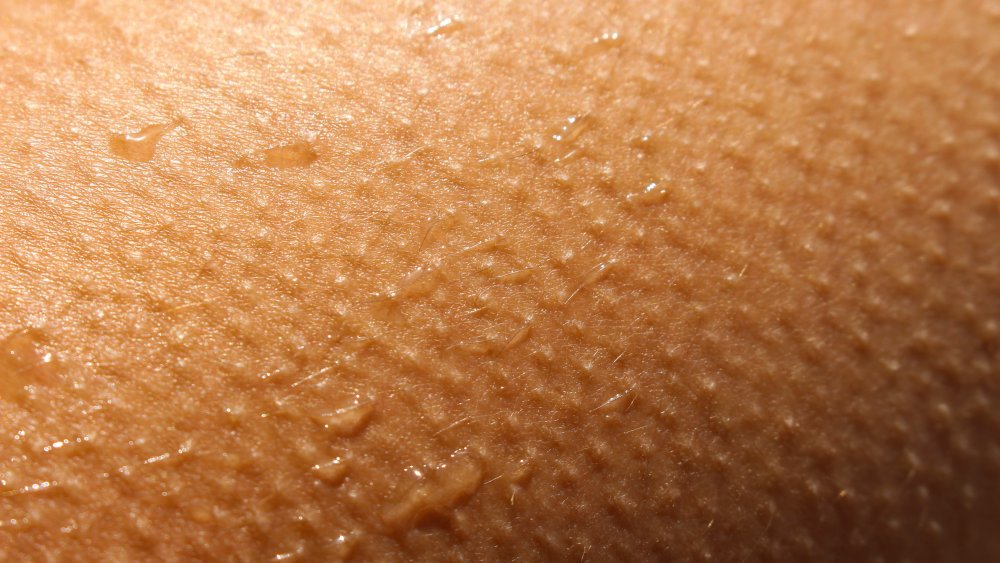When You Get Goosebumps, Here's What's Really Happening
Ever wonder why you get goosebumps, also called goose pimples or goose flesh? Those raised bumps on your skin may not seem to have a purpose on the outside, but inside, your body is creating them for a reason.
The main causes of goosebumps include being cold, having a fever or bacterial infection, hypoglycemia, fear or anxiety, extreme physical exertion, or a rare seizure disorder (via Insider). Getting goosebumps is a result of tiny muscles in your skin flexing, which causes hair follicles to rise.
It's not something you can do voluntarily. Go ahead, try to create goosebumps on purpose. You'd have to get cold or listen to some good music, right? That's because it's an involuntary response caused by the nerves in your sympathetic nervous system, the same nerves that cause your fight or flight response. You may have experienced goosebumps, for example, when you've heard music that moved you — but you can't make them pop up on purpose.
Some animals have this same response to a threat. Getting goosebumps causes their hair to stand up, making them look bigger, hopefully scaring off the threat. But what is happening inside your body to create goosebumps?
Why you get goosebumps
Getting goosebumps when you're cold is your body's way of trying to warm you up. This is the most common cause of goosebumps, according to Harvard Health. Your body reacts to cold by contracting muscles giving you chills or making you shiver, closing your pores, and making your hair stand up, creating a trapped layer of warm air near the skin.
If you have chills with a fever, you might have a virus or bacterial infection. Your body tries to kill the infection by contracting your muscles and raising your internal temperature, which in turn, gives you goosebumps.
What about when you're not cold or don't have a fever? The chills in these cases could be caused by hypoglycemia. It could also be a response to fear or anxiety, which causes your body to sweat in an attempt to lower your temperature. The boost of adrenaline alone can cause chills.
You can also get goosebumps from a hard workout. For example, you go for a long run and have been sweating because your body temperature increased. When you stop, your body is trying to get itself back to its normal temperature.
Goosebumps could also sign a rare seizure disorder called temporal lobe epilepsy, a brain disorder in the sympathetic nervous system. One other cause of goosebumps is opiate or heroin withdrawal. This might be the origin of the phrase, "quitting cold turkey."

